Related Research Articles
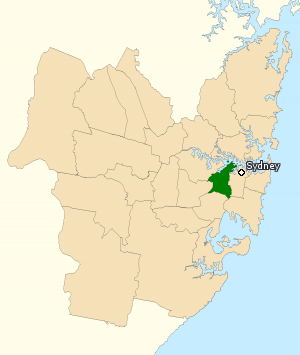
The Division of Grayndler is an Australian electoral division in the state of New South Wales.

Marrickville was an electoral district of the Legislative Assembly in the Australian state of New South Wales. It was an urban electorate in Sydney's inner west, centred on the suburb of Marrickville from which it took its name. At the time of its abolition it also included the suburbs of Camperdown, Darlington, Enmore, Lewisham, Newtown, Petersham, Stanmore and parts of Dulwich Hill and Erskineville as well as the University of Sydney.

Willoughby is an electoral district of the Legislative Assembly in the Australian state of New South Wales. It has been represented by Tim James of the Liberal Party since 12 February 2022.

Ryde is an electoral district of the Legislative Assembly in the Australian state of New South Wales. It includes the suburbs and localities of Denistone, Denistone East, Denistone West, Macquarie Park, Marsfield, Meadowbank, Melrose Park, Ryde, North Ryde, West Ryde; and parts of Eastwood and Epping.

Balmain is an electoral district of the Legislative Assembly of the Australian state of New South Wales in Sydney's Inner West. It is currently represented by Kobi Shetty of the Greens New South Wales.
Alexandria was an electoral district of the Legislative Assembly in the Australian state of New South Wales, created in 1904, partly replacing Waterloo, and named after and including the Sydney suburb of Alexandria. With the introduction of proportional representation, it was absorbed into the multi-member electorate of Botany. It was recreated in 1927, but was abolished in 1930.
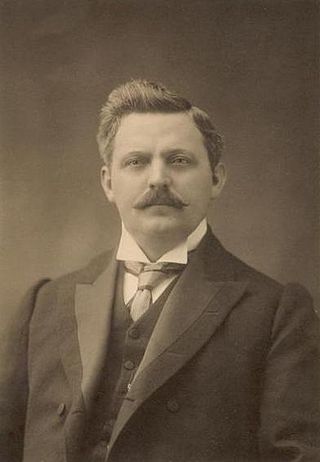
Henry Willis was an Australian politician, born in Port Adelaide, South Australia to English mariner John Willis and Jane, née Emmerson. Having been locally educated, Willis worked at his father's tannery, and in 1884 became a committee member of the South Australian Literary Societies' Union. The following year he had established his own tannery and was serving on the local board of health and Hindmarsh Municipal Council.

Elections to the 55th Parliament of New South Wales were held on Saturday, 26 March 2011. The 16-year-incumbent Labor Party government led by Premier Kristina Keneally was defeated in a landslide by the Liberal–National Coalition opposition led by Barry O'Farrell.

Arthur Hill Griffith was a politician, teacher and patent attorney in New South Wales, Australia. He was a member of the New South Wales Legislative Assembly from 1894 until 1917 and held a number of ministerial positions in the Government of New South Wales. He was a member of the Labor Party.
Members of the New South Wales Legislative Assembly who served in the 23rd parliament of New South Wales held their seats from 1913 to 1917. They were elected at the 1913 state election on 6 December 1913. The Speaker was Richard Meagher.
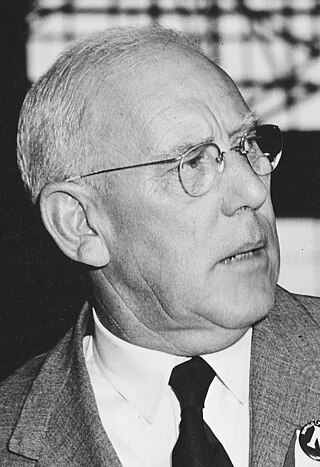
The 1950 New South Wales state election was held on 17 June 1950. It was conducted in single member constituencies with compulsory preferential voting and was held on boundaries created at a 1949 redistribution. The election was for all of the 94 seats in the Legislative Assembly, which was an increase of 4 seats since the previous election.
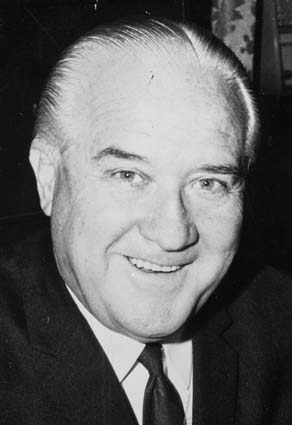
The 1968 New South Wales state election was held on 24 February 1968. It was conducted in single member constituencies with compulsory preferential voting and was held on boundaries created at a 1966 redistribution. The election was for all of the 94 seats in the Legislative Assembly. The Liberal Party, led by Premier Robert Askin, in Coalition with the Country Party of Deputy Premier Charles Cutler, was elected for a second term—the first time that a non-Labor government had been reelected since before World War II.
New South Wales politics takes place in context of a bicameral parliamentary system. The main parties are the Liberal and National parties of the governing Coalition and the Australian Labor Party. Other minor political parties include the Greens, Shooters, Fishers and Farmers Party and One Nation, along with multiple independents.
Annandale, an electoral district of the Legislative Assembly in the Australian state of New South Wales, had two incarnations, the first from 1894 to 1920, the second from 1927 to 1950.
Balmain, an electoral district of the Legislative Assembly in the Australian state of New South Wales, has had three incarnations since it was established in 1880. It expanded from 1 to 2 to 3 to 4 members before being abolished in 1894. It was re-established in 1904 returning 1 member until 1920. When multiple member constituencies were established using the Hare-Clark single transferable vote in 1920, Balmain returned 5 members. It had a single member from 1927 when the state returned to single member electorates. It was abolished in 1991 and largely replaced by Port Jackson which included the Sydney CBD. It was re-established in 2007 when Port Jackson was abolished.
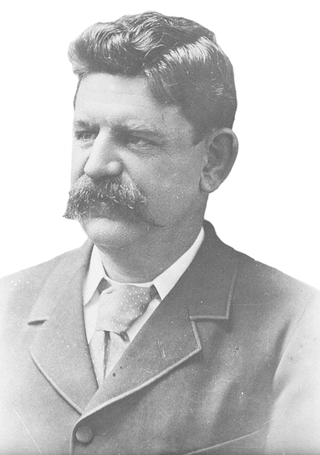
The 1910 New South Wales state election was held on 14 October 1910 for all of the 90 seats in the 22nd New South Wales Legislative Assembly and it was conducted in single-member constituencies with a second ballot if a majority was not achieved on the first. Both adult males and females were entitled to vote, but not Indigenous people. The 21st parliament of New South Wales was dissolved on 14 September 1910 by the Governor, Lord Chelmsford, on the advice of the Premier Charles Wade.

The 1907 New South Wales state election was held on 10 September 1907 for all of the 90 seats in the 21st New South Wales Legislative Assembly and it was conducted in single-member constituencies with a first past the post voting system. Both adult males and females were entitled to vote, but not Indigenous people. The 20th parliament of New South Wales was dissolved on 19 August 1907 by the Governor, Sir Harry Rawson, on the advice of the Premier, Sir Joseph Carruthers.
The 1904 New South Wales state election involved 90 electoral districts returning one member each. The election was conducted on the basis of a simple majority or first-past-the-post voting system. There were two significant changes from the 1901 election, the first was that women were given the right to vote, which saw an increase in the number of enrolled voters from 345,500 in 1901, to 689,490 in 1904. The second was that as a result of the 1903 New South Wales referendum, the number of members of the Legislative Assembly was reduced from 125 to 90. The combined effect of the changes meant that the average number of enrolled voters per electorate went from 2,764, to 7,661, an increase of 277%. Leichhardt was the only district that was not substantially changed, while The Macquarie and The Murray districts retained nothing but the name.
Rozelle, an electoral district of the Legislative Assembly in the Australian state of New South Wales had two incarnations, from 1904 until 1920 and from 1927 until 1930.
Surry Hills, an electoral district of the Legislative Assembly in the Australian state of New South Wales had two incarnations, from 1904 until 1920 and from 1927 until 1930.
References
- ↑ "Part 5B alphabetical list of all electorates and Members since 1856" (PDF). NSW Parliamentary Record. Parliament of New South Wales . Retrieved 12 April 2020.
